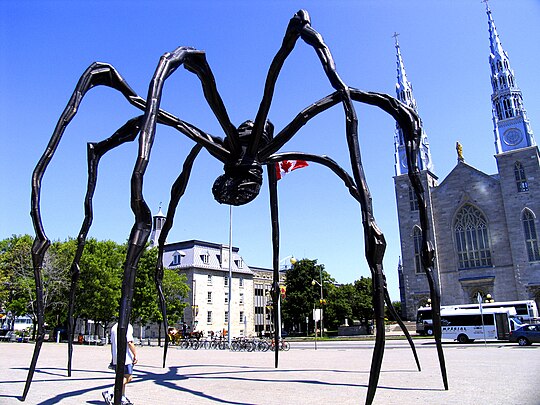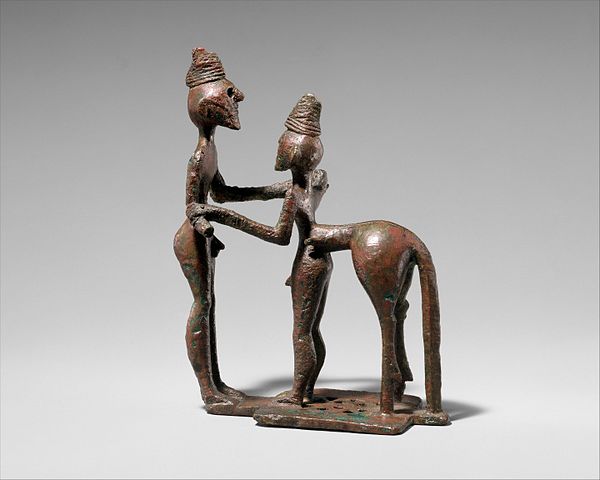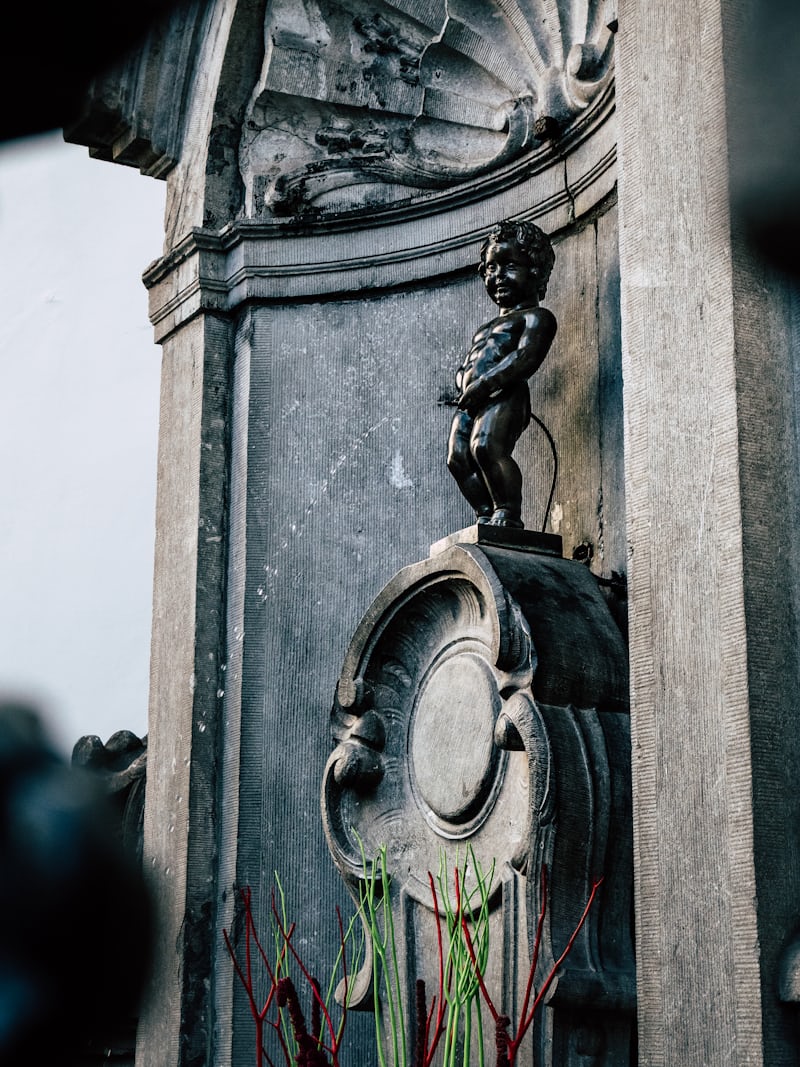Explore The Origins And Development Of Bronze Sculpture Throughout Different Cultures And Time Periods
Introduction
The bronze sculpture is a form of sculpture that uses the metal bronze as its primary material. Bronze is an alloy of copper and tin, and it is known for its strength, durability, and malleability. These properties make it an ideal material for sculpture, as it can be cast into complex shapes and then finished with a high degree of detail
The history of bronze sculpture dates back to the Bronze Age, which began around 3300 BC. The earliest known bronze sculptures were made in China and used for ritual and decorative purposes. Bronze sculpture soon spread to other parts of the world, including Egypt, Greece, and Rome

(Olympia Greece Solid Bronze Horse: Early 5th century BC)
In the Classical world, bronze sculpture was highly prized for its beauty and technical virtuosity. Many of the most famous sculptures from this period, such as the Winged Victory of Samothrace and the Discobolus, are made of bronze.
Bronze sculpture continued to be popular in the Middle Ages and Renaissance. During this time, bronze was used to create religious and secular sculptures. In the 19th century, bronze sculpture experienced a revival, as artists such as Auguste Rodin and Edgar Degas began experimenting with new techniques and styles.
Today, bronze sculpture is still a popular medium for artists. It is used to create both large-scale public monuments and small-scale works of art for private collectors. The bronze sculpture is a versatile and enduring art form that has been enjoyed by people for centuries.
Examples of Bronze Sculptures in history include:
-
DAVID (DONATELLO)

(Bronze David, Donatello)
David is a bronze sculpture by the Italian sculptor Donatello. It was created between 1440 and 1460 and is considered one of the most important works of Renaissance sculpture. The statue is currently on display at the Accademia Gallery in Florence, Italy.
David is a life-size sculpture of the biblical hero David, who defeated the giant Goliath with a slingshot. The statue is made of bronze and is approximately 1.70 meters tall. David is depicted as a young man, with a muscular body and a confident expression. He is nude except for a helmet and boots. The statue is notable for its realistic depiction of the human body and its use of contrapposto, a pose in which the weight of the body is shifted to one hip, creating a sense of movement and dynamism.
David was originally commissioned by the Medici family, who ruled Florence at the time. The statue was originally placed in the courtyard of the Palazzo Vecchio, but it was moved to the Accademia Gallery in 1873 to protect it from the elements.
David is considered one of the most important works of Renaissance sculpture. It is a masterpiece of realism and technique, and it is a powerful symbol of courage, strength, and victory.
David is an available bronze statue for sale crafted by many reputable sculptors and manufacturers in the present day. The best of them is The Artisan Studio, Contact them if you are interested in a replica of this famous statue
David is a beautiful and iconic sculpture. If you are looking for a large bronze statue that will add a touch of elegance to your home or office, then a statue of David is a great option.
-
THE THINKER
(The Thinker)
The Thinker is a large bronze sculpture by Auguste Rodin, usually placed on a stone pedestal. The work depicts a nude male figure of heroic size sitting on a rock. He is seen leaning over, his right elbow placed on his left thigh, holding the weight of his chin on the back of his right hand. The pose is one of deep thought and contemplation, and the statue is often used as an image to represent philosophy. Rodin conceived the figure as part of his work The Gates of Hell commissioned in 1880, but the first of the familiar monumental bronze castings was made in 1904 and is now exhibited at the Musée Rodin, in Paris.
The model for this sculpture, as for other works by Rodin, was the muscular French prizefighter and wrestler Jean Baud, who mostly appeared in the red-light district. Jean Baud was also featured on the 1911 Swiss 50 franc note by Hodler. The original is in the Musée Rodin in Paris. The sculpture has a height of 72 cm, was made of bronze, and had been finely patinated and polished. The work depicts a nude male figure of heroic size who is tense, muscular, and internalized, contemplating the actions and fate of the people while sitting on a rock.
The Thinker is one of the most famous sculptures in the world. It has been reproduced in countless forms, from small figurines to large-scale public works. It is also one of the most sculpted Bronze statues for sale. The statue is a powerful symbol of thought, contemplation, and creativity. It is a reminder that we are all capable of great things if we only take the time to think.
The Thinker is a popular choice of a large bronze statue for public art. It has been installed in parks, gardens, and other public spaces all over the world. The statue is a reminder that we are all capable of great things if we only take the time to think.
-
THE CHARGING BULL
The Charging Bull, also known as the Bowling Green Bull or the Wall Street Bull, is a bronze sculpture by Arturo Di Modica. It was created in 1989 and is located in Bowling Green, Manhattan, New York City.

(The Charging Bull)
The sculpture is a symbol of financial optimism and prosperity. It depicts a bull, the symbol of the stock market, charging forward. The bull is approximately 11 feet (3.4 m) tall and weighs 7,100 pounds (3,200 kg). It is made of bronze and is cast in the lost-wax method.
The Charging Bull was originally placed in front of the New York Stock Exchange on December 15, 1989, as a surprise gift to the city. It was later moved to Bowling Green, where it has remained ever since. The sculpture has become a popular tourist destination and is often used as a backdrop for photographs.
The Charging Bull is a powerful symbol of financial strength and resilience. It is a reminder that even in the face of adversity, the American economy will always prevail.
The Charging Bull has been the subject of much controversy. Some people have criticized the sculpture for being sexist and for promoting violence. Others have argued that the sculpture is a symbol of greed and excess. However, the Charging Bull remains a popular symbol of New York City and of the American economy.
For those captivated by the symbolism and allure of The Charging Bull, owning a bronze statue of this iconic artwork is a cherished opportunity. The Artisan Studio offers bronze statues for sale, allowing enthusiasts to bring a touch of Wall Street’s power and vitality into their own spaces.
Investing in a bronze statue of The Charging Bull allows individuals to embrace the symbolic strength and determination it represents while adding a touch of artistic grandeur to their surroundings. Whether displayed in a home, office, or public space, this bronze sculpture becomes a captivating centerpiece, inspiring success and resilience in all who behold it.
-
MANNEKEN PIS
(Manneken Pis)
Manneken Pis is a landmark 55.5 cm (21.9 in) bronze fountain sculpture in central Brussels, Belgium, depicting a puer mingens; a naked little boy urinating into the fountain’s basin. Though its existence is attested as early as the mid-15th century, it was redesigned by the Brabantine sculptor Jérôme Duquesnoy the Elder and put in place in 1618 or 1619. Its stone niche in rocaille style dates from 1770
Manneken Pis has been repeatedly stolen or damaged throughout its history. It was first stolen in 1619, just two years after it was installed. It was recovered a few days later, and since then it has been stolen 13 more times. In 1965, the statue was kidnapped by a group of students who demanded a ransom of 1 million Belgian francs. The statue was returned unharmed a few days later.
Manneken Pis is a popular tourist attraction and has been featured in many films and television shows. It is also a popular souvenir, and there are many replicas of the bronze statue for sale.
Manneken Pis is a symbol of Brussels and Belgium. It is a reminder of the city’s sense of humor and its history of defying the odds.
Whether displayed in a garden, a public plaza, or a private collection, this bronze sculpture becomes a delightful focal point, spreading laughter and adding a touch of whimsy to any setting. Mannekis Pis is an available bronze statue for sale crafted by many reputable sculptors and manufacturers. The best of them is The Artisan Studio, Artisan has the best reputation regarding quality and work communication style among all of the bronze industry
Investing in a large bronze statue of the Manneken Pis allows one to celebrate the joy and irreverence it embodies. Embrace the spirit of the Manneken Pis and its captivating bronze replica, and infuse your surroundings with the lively essence of Brussels’ cultural heritage.
-
MAMAN
Maman is a large bronze sculpture by Louise Bourgeois. It is a spider, 30 feet tall and over 33 feet wide. It includes a sac containing 32 marble eggs and its abdomen and thorax are made of ribbed bronze.

(Maman, Ottawa)
The sculpture was created in 1999 and is currently on display at the Guggenheim Museum in New York City. The title is the familiar French word for Mother (akin to Mummy). The sculpture was created in 1999 by Bourgeois as a part of her inaugural commission of The Unilever Series (2000), in the Turbine Hall at London’s Tate Modern.
The sculpture picks up the theme of the arachnid that Bourgeois had first contemplated in a small ink and charcoal drawing in 1947, continuing with her 1996 sculpture Spider. It alludes to the strength of the Bourgeois’ mother, with metaphors of spinning, weaving, nurture and protection. Her mother, Josephine, was a woman who repaired tapestries in her father’s textile restoration workshop in Paris. When Bourgeois was twenty-one, she lost her mother to an unknown illness.
Maman has been exhibited in major cities around the world, including Tokyo, Seoul, Hong Kong, and Sydney. It has been praised by critics for its power and beauty. The sculpture has also been criticized for its size and its depiction of a female figure as a spider.
Despite the criticism, Maman remains a popular and iconic sculpture. It is a powerful reminder of the strength and resilience of women.
Large bronze statues of Maman are available for sale from a number of online retailers. The best of them is The Artisan Studio, Contact them if you are interested in a replica of this famous statue
-
BRONZE MAN AND CENTAUR

(Bronze Man and Centaur, Metropolitan museum of Arts)
The Bronze Man and Centaur is an 8th century BC bronze sculpture, created in Greece during the mid-8th century BC, in the period of Archaic Greece. It is now in the collection of the Metropolitan Museum of Art. The sculpture was a posthumous gift of J. Pierpont Morgan given to the Metropolitan Museum in 1917.
The sculpture is a small, 4 3/8 inches (11.1 cm) tall, depiction of a man and a centaur in combat. The man is holding a spear, while the centaur is wielding a sword. The man is slightly taller than the centaur, and he appears to be in the process of striking the centaur.
The sculpture is made of bronze, and it is cast in the lost-wax method. The sculpture is in good condition, but it does show some signs of wear and tear. The man’s spear is missing, and the centaur’s sword is damaged.
The Bronze Man and Centaur is a rare and important example of early Greek sculpture. It is one of the few surviving sculptures from the Archaic period, and it provides a glimpse into the early development of Greek art.
The sculpture is also significant because it depicts a man and a centaur in combat. Centaurs were mythical creatures that were half-man and half-horse. They were often depicted as violent and savage creatures, and they were often used as a symbol of chaos and disorder.
The depiction of a man and a centaur in combat suggests that the Greeks saw the centaurs as a threat to their civilization. The Greeks were highly civilized people, and they valued order and harmony. The centaurs, on the other hand, were seen as a force of chaos and disorder.
The Bronze Man and Centaur is a powerful reminder of the conflict between order and chaos, civilization and barbarism. It is a reminder that even in the most civilized societies, there is always the potential for violence and disorder.
Frequently asked questions about The History of Bronze Sculpture
- WHO MADE THE FIRST BRONZE SCULPTURE
The first bronze sculptures were made during the Bronze Age, which began around 3300 BC. The exact origins of bronze sculpture are difficult to pinpoint as various ancient civilizations were simultaneously developing their bronze-casting techniques. However, some of the earliest known bronze sculptures were created in ancient China. Chinese artisans mastered the art of bronze casting and produced intricate ceremonial vessels, decorative objects, and figurines. These early bronze sculptures from China served ritual and symbolic purposes, showcasing the technical skill and artistic expression of the time. The Chinese bronze sculptures set the stage for the subsequent development of bronze sculpture in other civilizations, including Egypt, Greece, and Rome.
- HOW ARE BRONZE SCULPTURES MADE?
Bronze sculptures are typically made using the lost-wax casting technique. The process involves creating a detailed model or mold of the sculpture in wax. This wax model is then coated in layers of ceramic or plaster to create a mold. The mold is heated, causing the wax to melt and flow out, leaving behind a cavity in the desired shape. Molten bronze is poured into the cavity, filling the space. After the bronze cools and solidifies, the mold is broken, revealing the bronze sculpture. Finally, the sculpture is refined and finished through various techniques such as polishing, patination, and detailing
- WHERE CAN I FIND BRONZE SCULPTURES?
Bronze sculptures can be found in various locations worldwide, including museums, art galleries, public parks, and private collections. Prominent museums and art institutions often feature exhibitions dedicated to bronze sculptures, allowing visitors to appreciate the artistry and historical significance of these works. Additionally, many cities display public sculptures in prominent locations, offering opportunities to encounter bronze sculptures as part of the urban landscape.
- ARE THERE MODERN ARTISTS CREATING BRONZE SCULPTURES?
Yes, many contemporary artists continue to create bronze sculptures today. These artists pushing the boundaries of the medium, experimenting with new techniques, forms, and concepts, showcasing the continued relevance and evolution of bronze sculpture in contemporary art. The best of them is The Artisan Studio, Contact them if you are interested in a replica of this famous statue
- CAN I PURCHASE BRONZE SCULPTURES?
Yes, bronze sculptures for sale are available through various avenues. Art galleries, online art marketplaces, and specialized art dealers often offer a wide range of bronze sculptures for sale. A renowned Bronze Sculpture Manufacturer is Artisan, Whether you’re a collector, art enthusiast, or looking to enhance your living or working space with a stunning piece of art, there are opportunities to acquire bronze sculptures to suit different tastes and budgets.
- ARE BRONZE SCULPTURES DURABLE?
Yes, bronze sculptures are highly durable due to the strength and corrosion resistance of the bronze alloy. With proper care and maintenance, bronze sculptures can last for centuries, making them a long-lasting investment. They are capable of withstanding outdoor elements and moderate fluctuations in temperature, making them suitable for display in various environments. While they may develop a natural patina over time, this often enhances their beauty and does not compromise their durability. Overall, bronze sculptures are renowned for their enduring nature and ability to withstand the test of time.
- ARE BRONZE SCULPTURES SUITABLE FOR OUTDOOR USE
Yes, bronze sculptures are well-suited for outdoor use. Bronze is a durable and weather-resistant material, making it suitable for withstanding outdoor elements. It is highly resistant to corrosion and can withstand exposure to rain, sun, and moderate temperature changes without significant deterioration. Many public parks, gardens, and plazas feature outdoor bronze sculptures that have maintained their beauty and integrity over time. However, it’s important to note that extreme environmental conditions, such as severe weather or excessive pollution, may require additional protection or maintenance to ensure the longevity of the sculpture.
Conclusion
In conclusion, the history of bronze sculpture is a testament to the enduring nature of this art form. From its origins in ancient civilizations to its continued popularity today, the bronze sculpture has captivated and inspired generations. The beauty, strength, and versatility of bronze as a material has allowed artists throughout history to create magnificent works that stand the test of time. Whether it’s the classical masterpieces of ancient Greece or the modern interpretations of contemporary artists, bronze sculpture continues to be cherished for its ability to convey emotions, capture moments in history, and leave a lasting impression on those who appreciate its artistry.
Post time: Aug-28-2023


